Uranium is a radioactive element that occurs naturally in soil, rock, and water. Tiny uranium particles are also present in the air as dust. Air purifiers trap airborne contaminants and therefore might help remove airborne Uranium.
Air purifiers with HEPA filters, ionizers, or electrostatic filters can remove uranium particles from the air. Purifiers with H13 or H14 medical-grade True HEPA filters are the most effective and can remove >99.97% of uranium particles as small as 0.3 microns. Ionizers and electrostatic filters can cause uranium dust to settle out of the air onto surfaces around the home.
This article discusses air purifiers and uranium removal. We explain how Uranium enters our homes, why it is unsafe, and how air purifiers might help prevent uranium exposure.
Uranium
Uranium is a silver-green metal that cannot be degraded chemically. However, it is radioactive and naturally decays to achieve stability. This process, also called radioactive decay, results in the emission of energy, which is more commonly known as radiation.
According to the International Atomic Energy Agency (IAEA), Uranium is only mildly radioactive, producing around two µBq (Bq or ‘becquerel’ is a measure of ionizing radiation due to radioactive decay) of radioactivity per cubic meter of air.
Occurrence
Air is concentrated with minute particles of earth substances or waste matter, called dust. This also includes tiny particles of Uranium and other metals.
Unfortunately, dust not only circulates in the air, but lingers for a long time. In fact, dust particles smaller than 1 micrometer can remain airborne for more than 20 days – uranium can be as small as 0.000196 of a micron.
Other than air, soil and water may also contain Uranium. For example, Uranium can occur in wells if the drilling is done in uranium-rich rocks.
Uranium dust contaminates food as well. According to the CDC, our daily intake of Uranium can reach 0.9 to 1.5 micrograms.
Some amount of uranium exposure is normal. However, if you suspect a high concentration of the radioactive substance, you can get a certified radon-testing professional to inspect the house.
Plentiful Air has more information on how to reduce the amount of radon in your home available here.
Coming into contact with uranium dust is not usually all that harmful. This is because our skin blocks the type of radiation it emits (alpha particles). However, breathing in (inhaling) or eating/drinking (ingesting) uranium particles can prove devastating.
Inhaling large amounts of uranium can cause lung cancer, while ingesting it can lead to kidney disease, bone cancer and liver cancer.
How Do Air Purifiers Work?
Air purifiers are devices that sterilize air by clearing airborne contaminants from it.
A rotating fan draws air inside the air purifier. The filtration system then removes the contaminants as they pass through, and the clean air is blown into the room. The type of contaminants removed depends on the type of filter used.
Since Uranium is a particle, let’s take a look at air filters that remove airborne particulate matter:
- Pre-Filter: These are generic filters installed in almost all air purifiers. They have large pores or holes (ranging from 100 to 3000 microns). This means most of the microscopic contaminants, including uranium, pass right through it.
It primarily serves to remove large particles and debris, to protecting the purifier from damage. By removing the larger particles it can also improve the optimal life of the other filters.
- True HEPA Filter: HEPA or ‘High-Efficiency Particulate Air Filters’ are one of the most effective filtration systems. The fine filter pores can capture contaminants sized 0.3 microns or more.
This includes uranium dust, debris, pollen, dander, hair, and microbes like bacteria, mold, and viruses.
- Ionizers: These are devices that emit high-energy charged particles (negative ions). This produces static electricity inside the air purifier, causing the particles to settle on and stick to nearby surfaces while the air is propelled forward.
- Electrostatic Filters: They are the same as ionizers, except they generate both positive and negative ions. Therefore, they are comparatively better at air purification.
Other filters like activated charcoal, UV bulbs, TiO2 filter, and ozone generators do not act on particles and, therefore, do not affect airborne uranium concentrations.
Can Air Purifiers Remove Uranium?
Uranium enters your body from the air (inhalation), ingestion via food and water, and dermal (skin) contact. Understandably, air purifiers can only get rid of airborne uranium dust.
According to the CDC, around 0.76% to 5% of Uranium that a person breathes in is absorbed into the bloodstream, with the remaining uranium compounds naturally cleared from the lungs. However, this minuscule amount is enough to cause significant damage to your health, so it is crucial to reduce uranium exposure as much as possible.
Of the four filters capable of removing particulate contaminants only 3 affect the concentration of uranium in the air.
- The pre-filter has large pores that allow uranium dust (measuring ~2.6 microns) to simply pass through unaffected.
- HEPA filters can easily remove uranium dust larger than 0.3 microns from the air. Uranium dust has been measured around 2.6 microns (although they can be smaller). Thanks to their over 99.97% efficiency, air purifiers with HEPA filters are the most effective at removing uranium.
- Ionizers and electrostatic filters can also extract airborne Uranium by causing the particles to settle out.
Best Air Purifiers For Uranium Removal
Here are 8 of the best air purifiers you can invest in for uranium removal:
Tracs Air Purifier
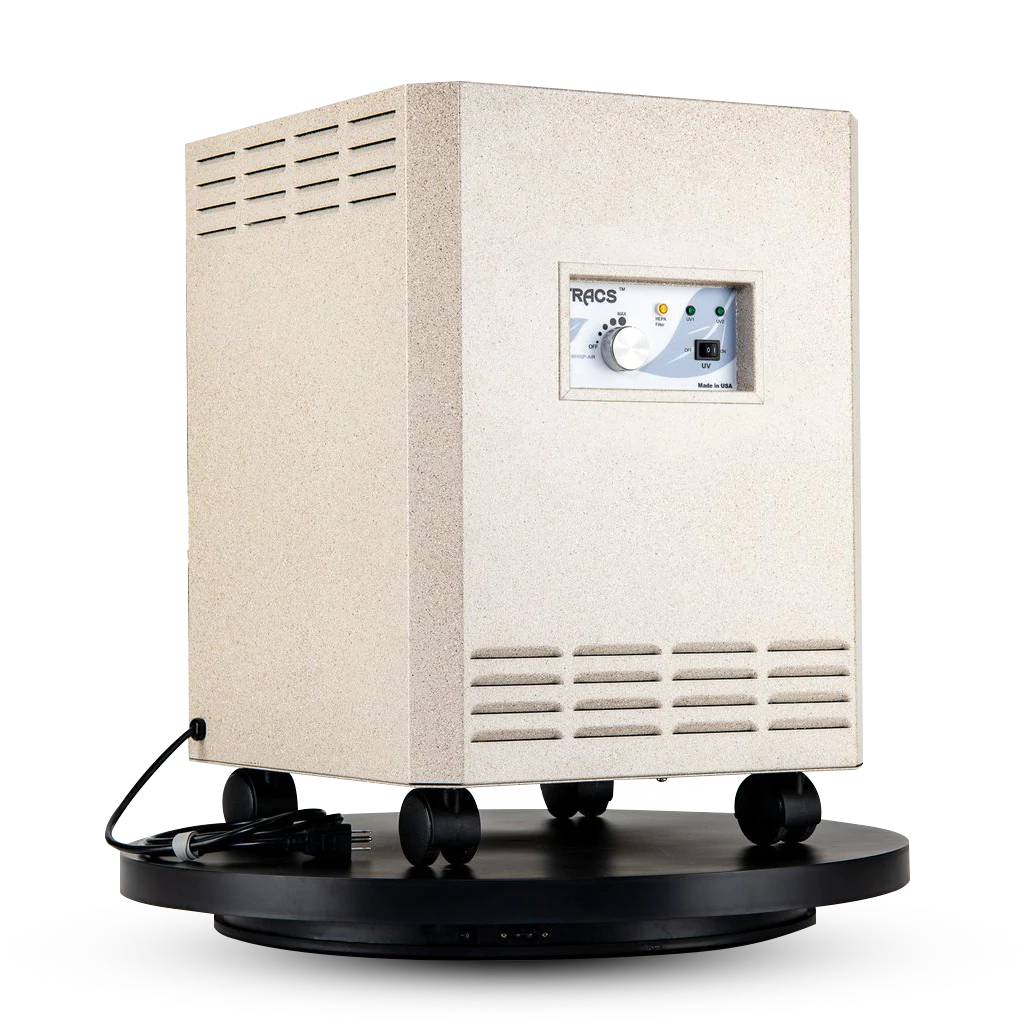
Next up, we have Tracs TM250 Air Purifier, which caters to large rooms. The extensive coverage implies filtration of uranium dust from the air over a 1875 sq. ft. area every hour.
It comes with HEPA, activated charcoal, and UVGI filtration technology. While the HEPA filter removes more than 99% of all germs, dust, debris, and tiny radioactive metals, the activated charcoal takes care of poisonous gases and volatile organic compounds (VOCs).
Activated charcoal is made by heating and oxidizing pure carbon. The resultant substance is highly porous. It adsorbs airborne gases, which are prevented from re-entering the air by the filter pores. Smoke, odorous molecules, nitrogen dioxide, formaldehyde, and various other gases are filtered in the process.
The UVGI technology employs a UV bulb to emit ultraviolet radiation of 254 nm wavelength. This acts as a germicide, inactivates microbial DNA, and efficiently kills pathogenic organisms, including bacteria, viruses and mold.
Enviroklenz Home Air Purifier
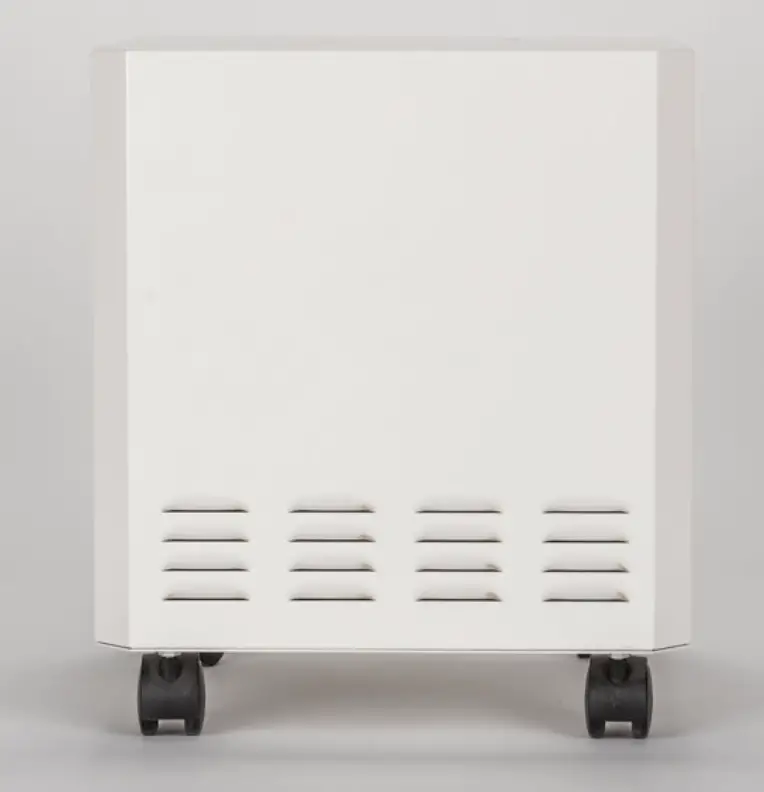
The Enviroklenz Home Air Purifier 1000 sq. ft. is a large space unit that delivers premium filtration of uranium particles through high-quality HEPA filters.
It provides round-the-clock protection from germs like mold, bacteria, and viruses and gets rid of radioactive dust, debris, pet dander, and hundreds of other environmental toxins.
Air purification aside, this system also ensures a top-notch user experience. With convenient touch button versatile controls, you can set up your device in no time. The four fan speed options allow you to decide the rate of air purification.
Whisper-quiet operation is another added advantage of the Enviroklenz Home Air Purifier. Unlike many traditional units, you do not have to worry about disturbance during sleep.
Afloia 2-in-1 HEPA Air Purifier
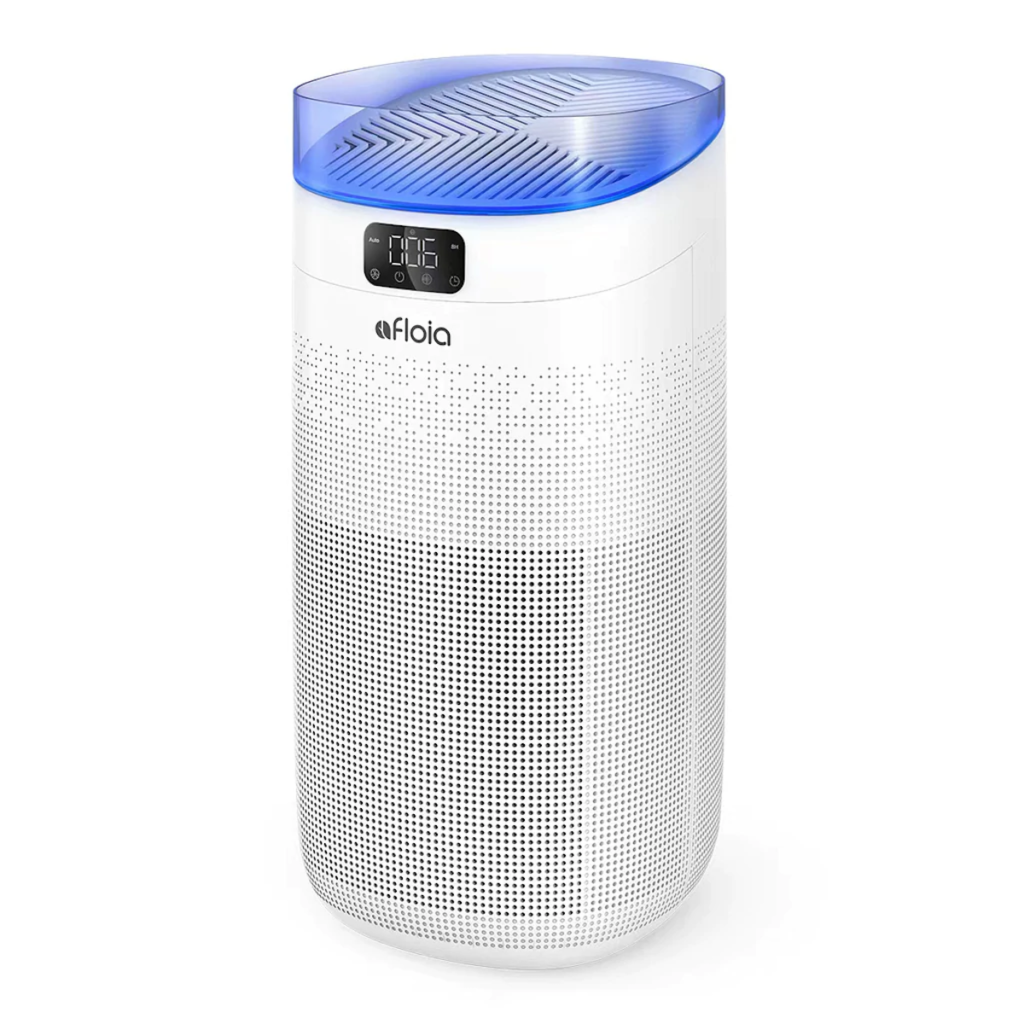
Afloia is a renowned name in the industry of domestic appliances. Their Mage Air Purifier is a customer-favorite filtration system.
It features a pre-filter, a medical grade 13 HEPA filter, an activated charcoal filter, and a UV-C bulb.
The pre-filter removes large-sized debris from the air as soon as it enters the system, thus, protecting other filters and components of the air purifier. Next to it lies the True HEPA filter that captures 99.97% of pollutants, including dangerous radioactive uranium dust.
After HEPA filtration, air passes over the activated charcoal that extracts gases and odorous molecules. Lastly, the UV-C bulb enhances filtration quality by killing pathogens.
This four-tier filtration ensures a constant supply of safe-to-breathe, fresh air.
Afloia air purifier range also includes 2-in-1 combo units with dehumidifiers and humidifiers that you can purchase to save space and energy.
Alen BreatheSmart 45i

The Alen BreatheSmart 45i is one of the most dependable air purifiers. Like the preceding product, this one too has a four-stage filtration system comprising a pre-filter, a HEPA filter, an activated charcoal filter, and a B4 Pure filter.
Thanks to the pre-filter, this unit lasts years if adequately maintained. The HEPA filter offers premium air purification by removing over 99% of particles (including radioactive Uranium) and pathogens. Similarly, the B4 filter also traps particulate matter.
In contrast, the charcoal filter captures gases and VOCs.
This unit covers 800 sq. ft. and is suitable for mid to large-sized rooms. It has been tested and cleared by SleepScpre Labs, implying whisper-quiet operation for a comfortable environment.
PureZone 3-in-1 Air Purifier
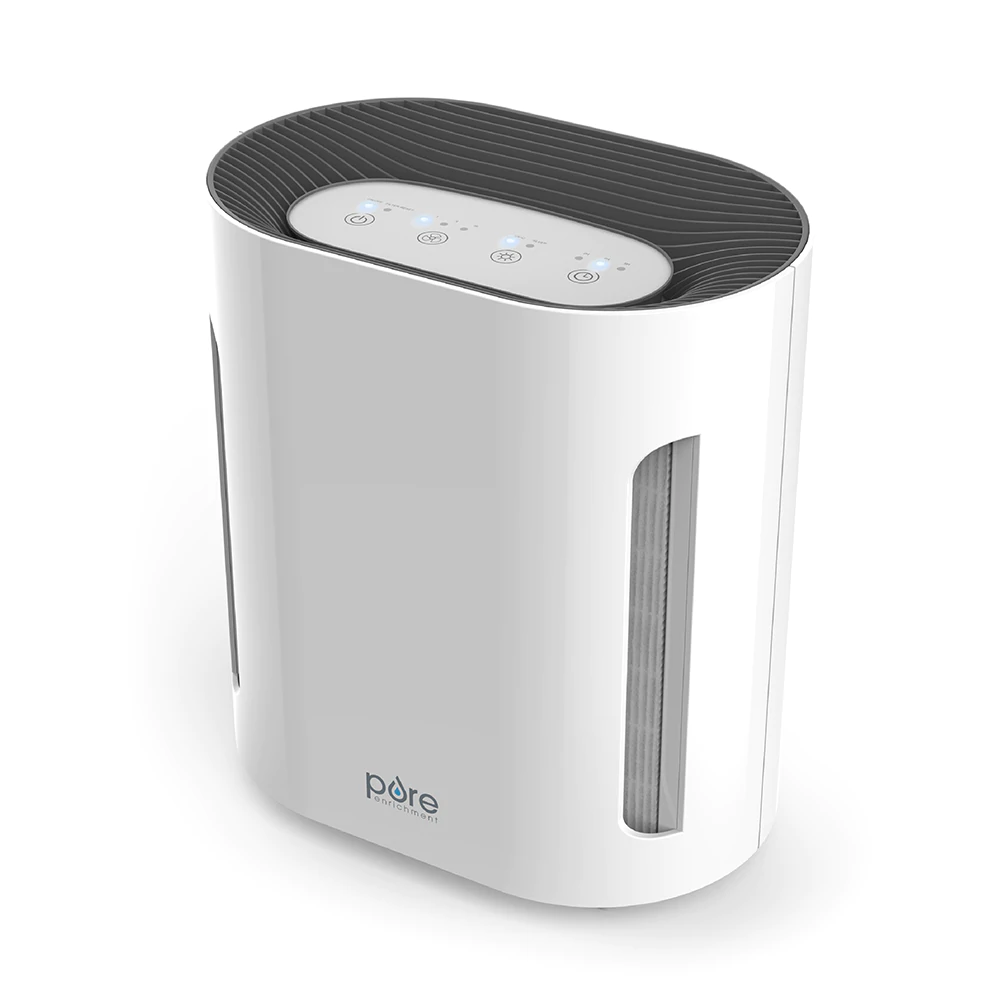
Our next product is PureZone 3-in-1 Air Purifier. It has four filters, i.e., pre-filter, HEPA filter, activated charcoal, and a UV-C bulb. This combination removes over 99% of airborne contaminants, significantly improving indoor AQI within a few minutes of operation.
The HEPA filter captures radioactive uranium dust, debris, pollen, mold spores, and germs. At the same time, the activated charcoal removes foul-smelling gases, VOCs, and chemicals from the air.
The UV-C bulb emits 256 nm ultraviolet light that kills molds like Aspergillus niger by 88.2%. Independent testing also shows that ultraviolet radiation kills 99% of viruses and bacteria.
TotalClean 5-in-1 Portable Air Purifier
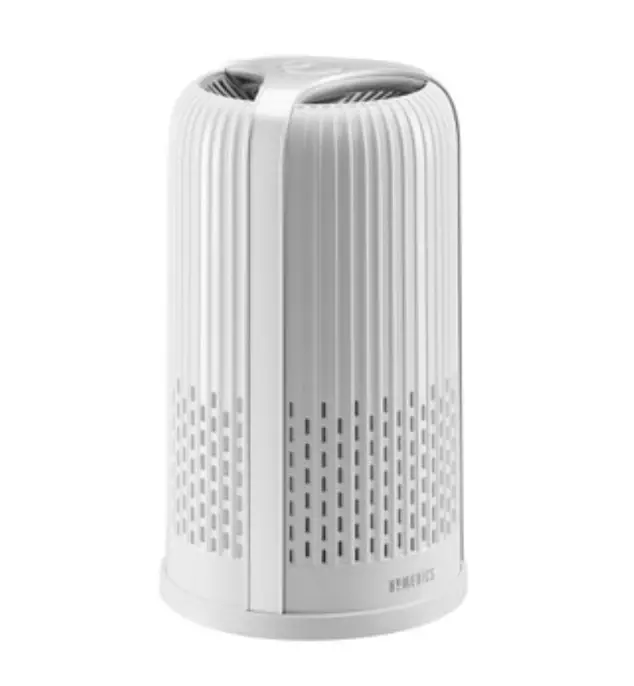
The TotalClean 5-in-1 Portable Air Purifier by Homedics is a small room air purifier. It covers 106 sq. ft. and features a pre-filter, a HEPA filter, an activated charcoal filter, and a UV bulb.
We know that a pre-filter protects the system, whereas the HEPA filter removes radioactive substances like Uranium, dust, debris, pollen, dander, germs, and other infectious agents and allergens.
The activated charcoal gets rid of toxic gases and VOCs, while the 256 nm ultraviolet radiations from the UV bulb kill germs.
This unit can also function as a 2-in-1 device. It has slots for essential oil pads. The purified air blowing out of the system flows over the pads, causing the oil molecules to evaporate and diffuse into the room.
Even at the highest fan speed, you can stay assured of noise-free air purification. All-in-all, if you are looking for small room air purifiers, this is one of the best units you can get hands-on.
hOmeLabs Popular Science Air Purifier
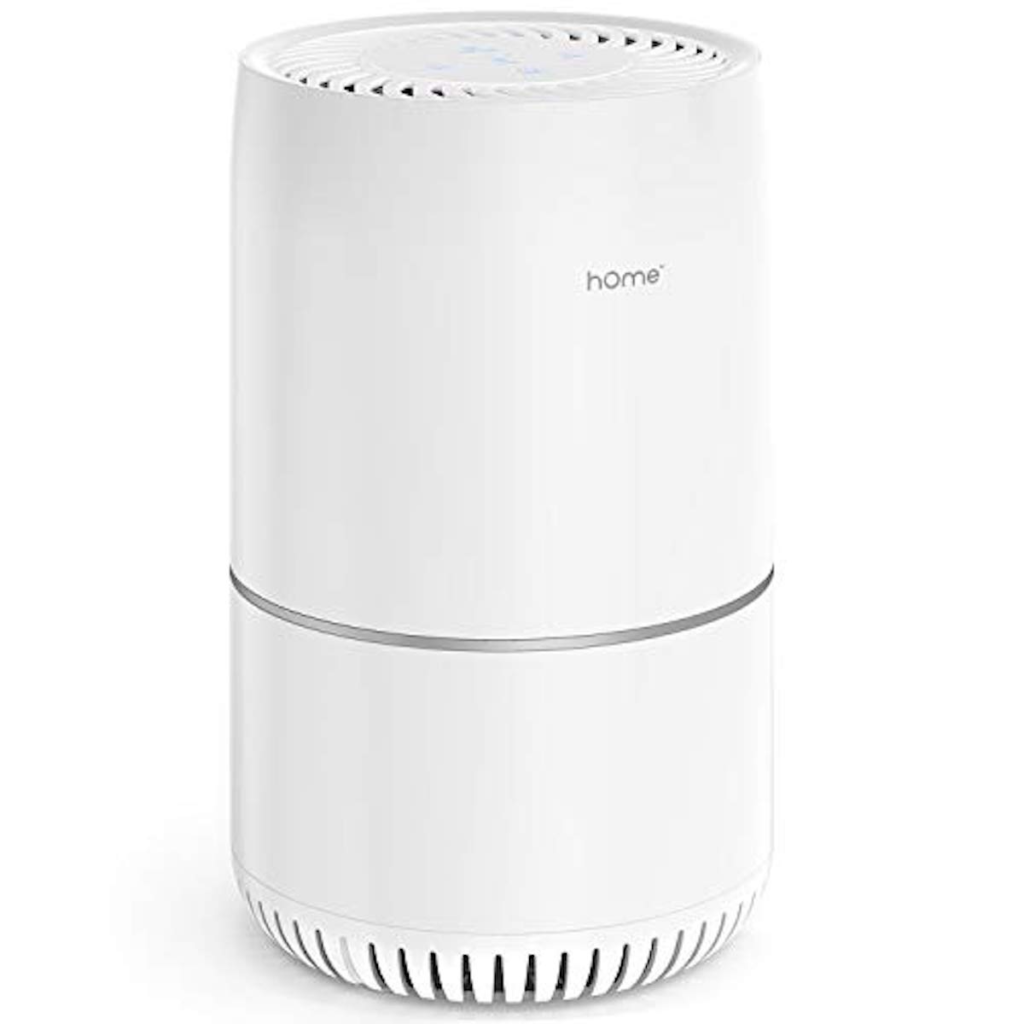
Staying true to its name, hOmeLabs Popular Science Air Purifier offers premium air purification through its high-quality pe-filter, HEPA filter, and activated charcoal filter.
After passing through the three filters, your indoor environment will be cleaned of 99% contaminants, radioactive substances, gases, and pathogens in less than an hour.
On top of that, the versatile controls, fan speed, timers, display lights, etc., provide you with the best user experience.
Vremi Premium True HEPA Air Purifier
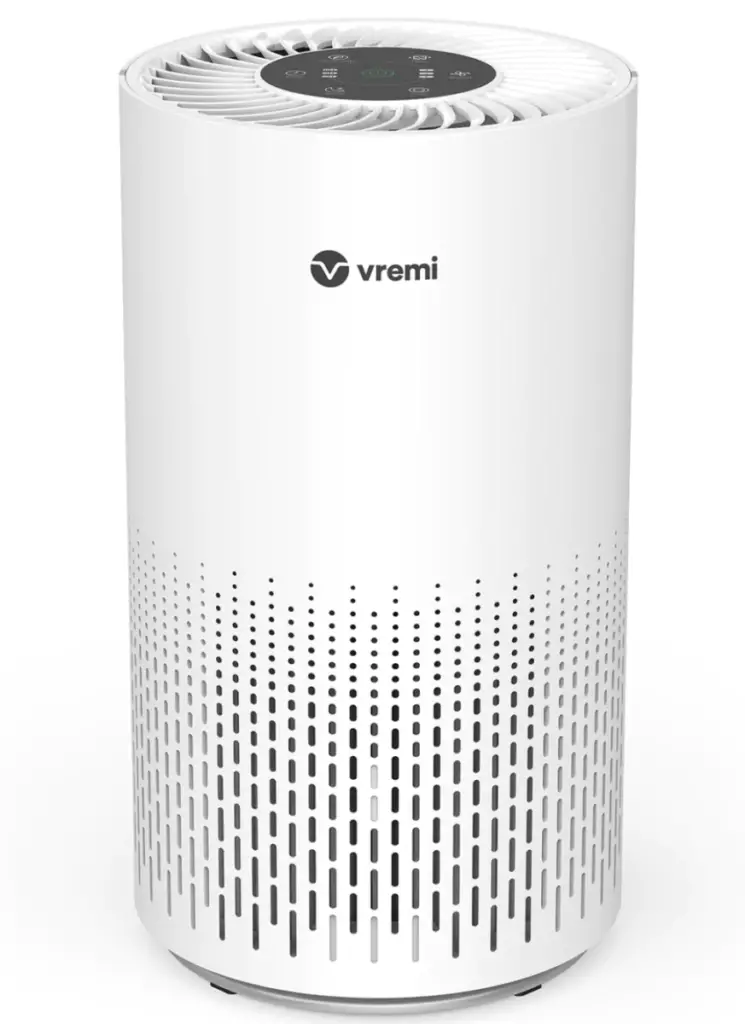
The last product on our list is Vremi Premium True HEPA Air Purifier. It has a pre-filter, a True HEPA filter, and an activated charcoal filter.
Together, the three filters remove Uranium and other radioactive dust, debris, germs, gases, and various other airborne pollutants with more than 99% efficiency.
The unit lasts over 180 days (4320 hours of runtime).
One of its biggest selling points is low maintenance. The activated charcoal and HEPA filter do not require regular cleaning, and you can easily get by for months just by regularly vacuuming the pre-filter.
What is Uranium used for?
Uranium is a sought-after, valuable metal. As of 2022, the uranium mining market is expected to be valued at nearly $10.18 billion.
Uranium is primarily used as a fuel for nuclear power plants and nuclear reactors. However, uranium 235 (an isotope) splits easily, and therefore, companies use nuclear fission (disintegration of a nucleus into smaller nuclei) to generate heat energy from Uranium.
The energy produced is then used to generate electricity.
Uranium offers a substantial advantage over fossil fuels when it comes to generating electricity. It is abundant (and hence cost-effective) and produces insignificant concentrations of CO2.
The metal is also used on helicopter rotors and airplane controls. It is denser than lead and, therefore, serves as a shield on military vehicles against harmful ionizing radiation.
The radioactive nature and emission of radiation (alpha particles) enable Uranium to be used for medical therapies (for example, in cancer treatment) as well.
What are the health Complications of Uranium?
Uranium is a large atom that undergoes radioactive disintegration to get rid of excess atomic energy. This energy is emitted as ionized particles or radiations called alpha and beta particles, and gamma rays.
Exposure to this radiation or uranium particles can have various health implications, such as:
- Kidney Damage: Uranium primarily targets renal functions. While small amounts of metal can cause mild impairment, 50 to 150 mg intake causes acute kidney failure and death.
- Neurobehavioral Changes: Uranium is associated with neurobehavioral changes. Daily exposure to 2 mg uranium for 1.5 months manifests as anxiety, paradoxal sleep, memory loss, etc.
- Cancer: Uranium is a known carcinogen. Lung cancer is the biggest risk for uranium miners.
- Congenital Defects: Some animal experiments found that uranium exposure during pregnancy may lead to fetal death or birth defects in infants.
- Infertility: There is some evidence of Uranium reducing fertility in animals.
Other than these significant health risks, mild skin irritation and inflammation are also common side effects of Uranium.
